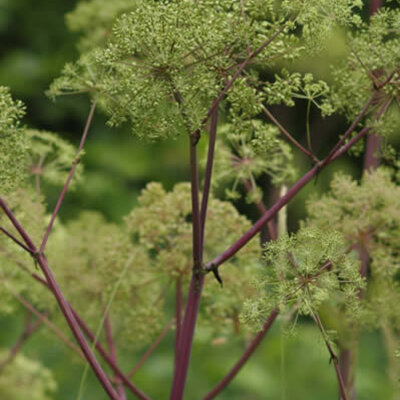
Angelica atropurpurea - Angelique
This biennial species can reach heights of over 2 m, and produces upright, branched red stems bearing white-green umbels from May to June, whose abundant seeds self-sow.
All parts of the plant are aromatic. Its candied stems decorate and flavor cakes.
These products may also be of interest to you
in the ground, in bucket
Sow directly in place, in stacks of 2 to 3 seeds. Press lightly, keep moist until emergence, then thin out to keep a single plant. You can also sow in a bucket, under cover. To facilitate germination, store seeds in a moist substrate in the refrigerator for two periods of 60-90 days, interspersed with 60-90 days of warm storage (at 25-30°C). Monitor regularly and plant if germination begins.
At the end of the season, prune fairly short. Angelica disappears completely in winter and comes back early in spring.
March, April, July, August, September
March, April, July, August, September
April, May, June, July, August, September
in the ground
sunny, semi-shade
fort
humus, limestone
drained, fees, light
Angelica atropurpurea
late
100 seeds
Green, White
edible
From 200 to 250 cm
serrated
North America
The roots, used in Chinese medicine, are harvested in autumn, then washed and air-dried. They are then slit lengthwise to speed drying. The stems and petioles are also used to make pastries and confectionery, and the leaves can be eaten as a condiment. They are used fresh, but can also be frozen.






